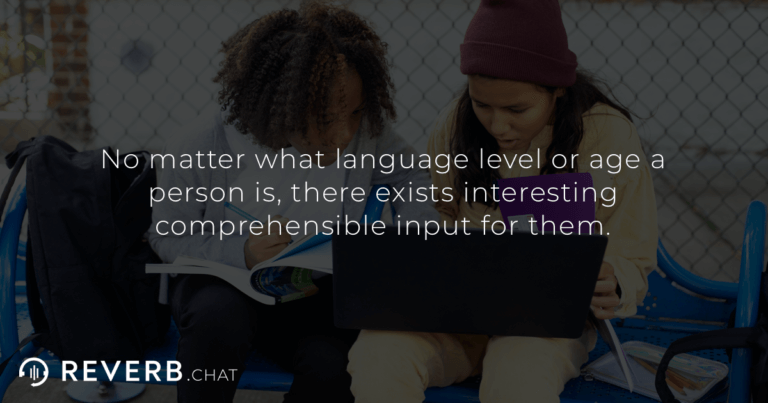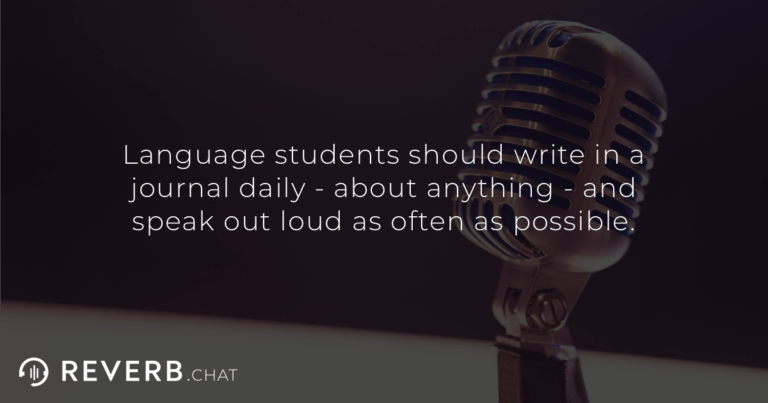The author’s views are entirely his or her own and may not always reflect the views of Reverb.
Two of any language learner’s most difficult struggles are usually motivation and confidence.
These struggles often come from a mismatch between how students want to use their language skills and the “traditional” material available to them.
Students want to eventually feel comfortable listening and speaking. Textbooks and worksheets don’t provide this feeling.
A remedy to textbooks and worksheets
The number one method that every teacher can and should use is providing interesting comprehensible input.
Linguist Stephen Krashen formed the “input hypothesis” in the 70s and 80s, which states that learners learn the fastest when they spend time with comprehensible input that is at the upper edge of their current knowledge.
Comprehensible input in language learning is material that students and learners can understand – even if they don’t know every single word or phrase. This type of input should be challenging without causing too much frustration.
No matter what language level or age a person is, there exists interesting comprehensible input for them.
For example, children may not be engaged listening to a dialogue about buying groceries. However, they may instead prefer simplified fairy tales, children’s shows made in the target language, or discourse about their favorite sports.
Most students and teachers need to focus more time on language input than language output.
Still, getting the student to regularly use what they know is vital.
What language students can do now
Language students should write in a journal daily – about anything – and speak out loud as often as possible. Simple tools like Evernote or Google Docs can be used for journaling and Reverb Record for speaking and sharing.
Beginners often need scaffolding help from their teachers, tutors, or language partners to start having conversations.
Scaffolding in language learning is like offering a student training wheels. The teacher may say, “I like to read books in my free time. What do you like to do in your free time?” The student can then respond with, “I like to hike in my free time,” feeling more confident in their answer because they’ve been given the grammar.
Additionally, talking or writing about comprehensible input is a great way to provide scaffolding for a student’s output.
Worksheets vs. comprehensible input and scaffolding
If a student is the type of learner who enjoys grammar worksheets, that’s great. However, this is unusual and this type of studying often feels like useless busywork for both children and teens.
Adults, on the other hand, vary. They may spend too much time on grammar worksheets over more comprehensible input. They may also skip these tedious exercises and then become demotivated out of feelings of guilt.
For the very first language basics, programs that teach language in chunks – phrases and sentences over individual words – are the most useful.
Glossika, Pimsleur, and the Michel Thomas Method are great resources. They keep the input comprehensible and also encourage student output.
Once you can gauge the level of your language students, start showing them online articles and YouTube videos that are slightly difficult for them to understand, but are about topics they find interesting.
Again, this is comprehensible input.
A more engaging way to teach language
All this allows students to feel accomplished for what they already know and learn new vocabulary words or concepts through context clues.
The students’ interest in the topic helps maintain motivation to continue studying and using what has been taught.
Creating this engagement carries students to an ever-increasing proficiency in their target language and remedies the status quo of textbooks and worksheets.







